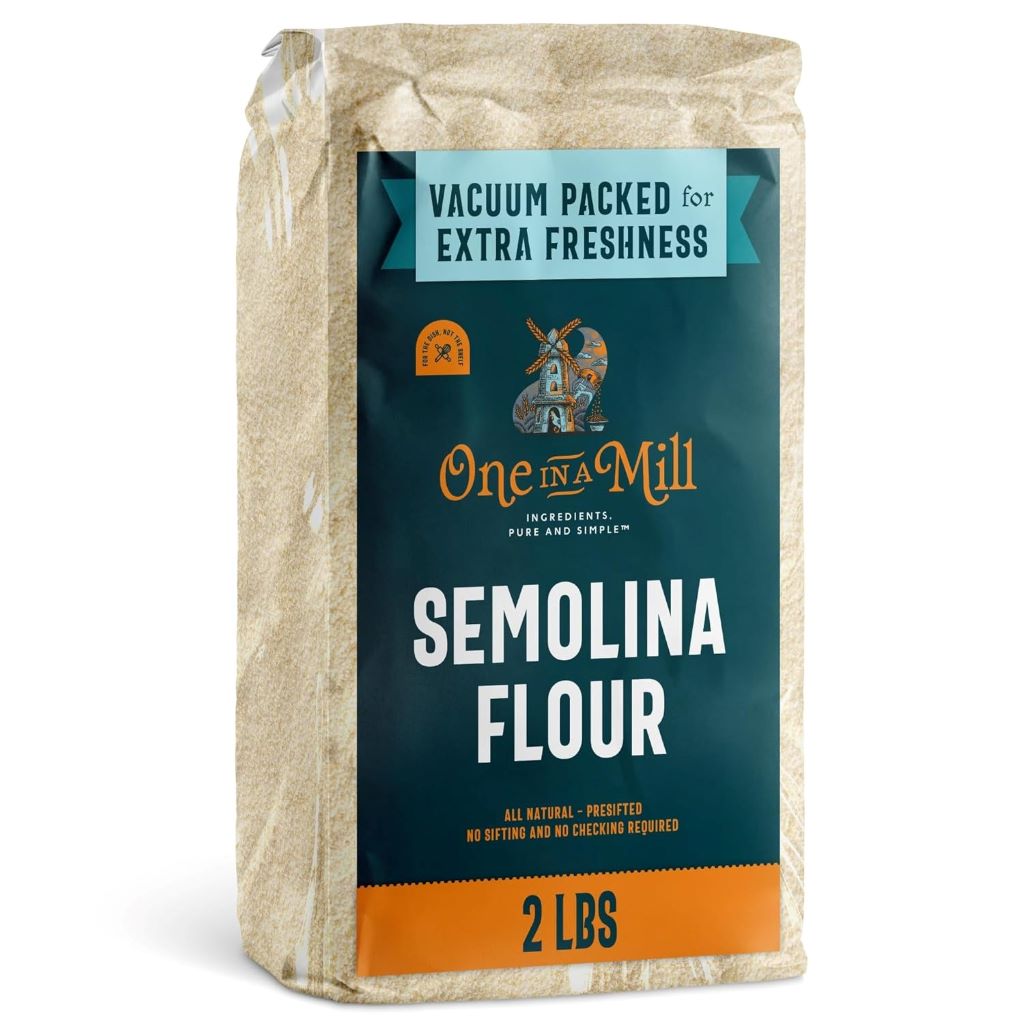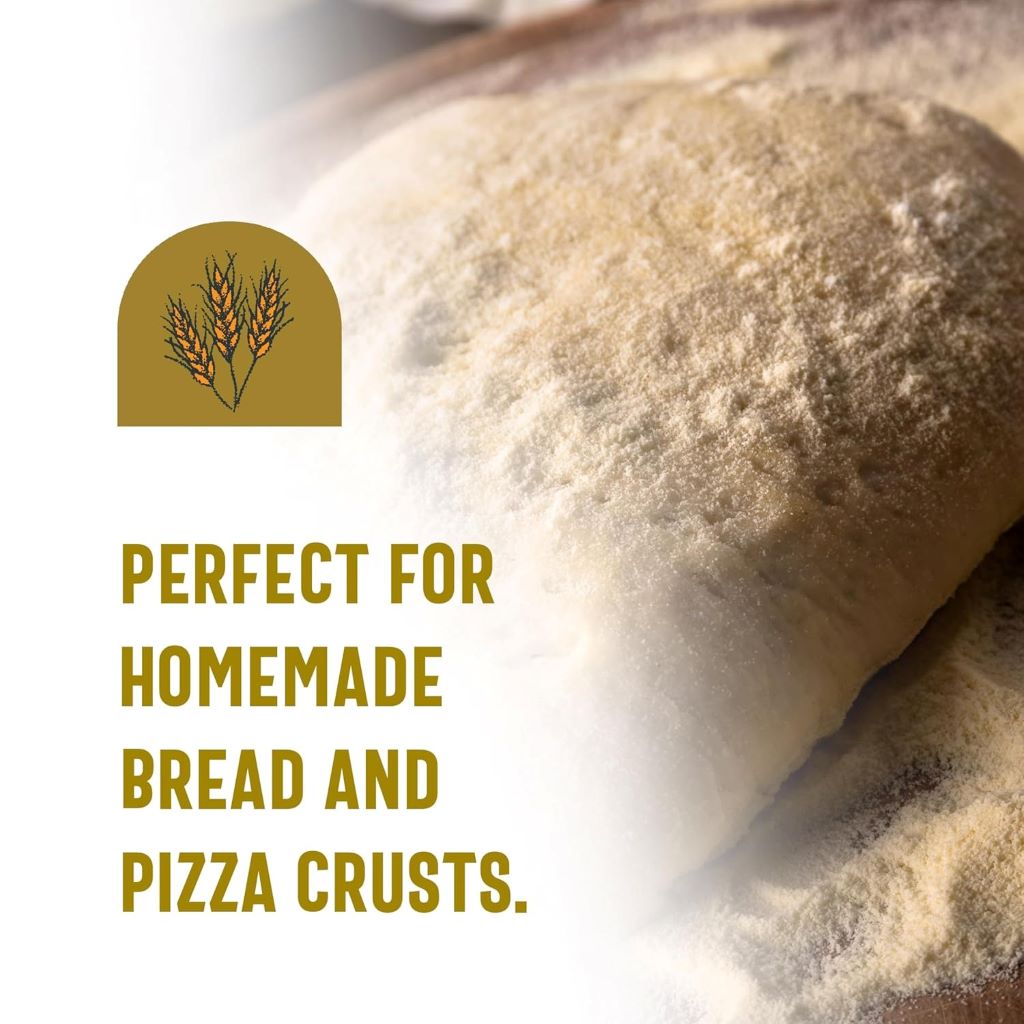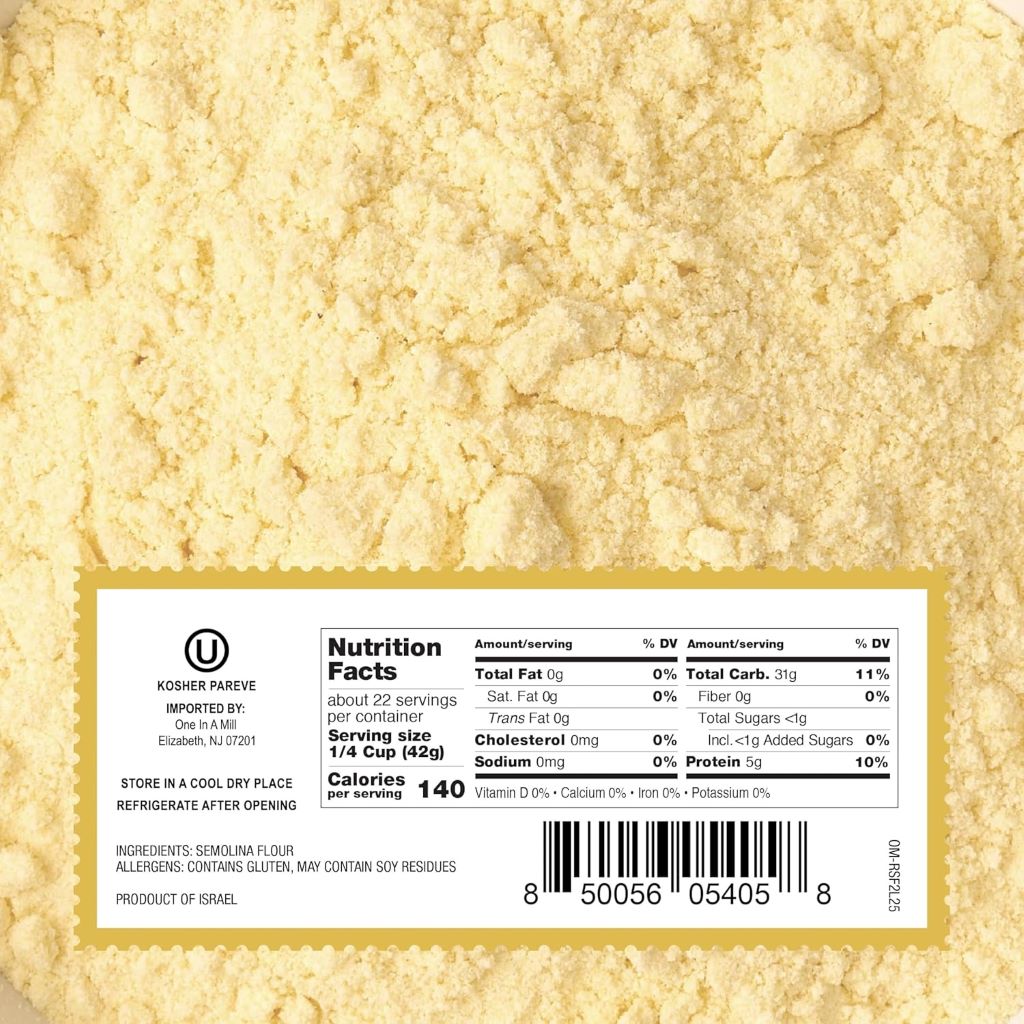ONE IN A MILL Semolina Flour – High-Protein Durum Wheat for Pizza, Pasta And Bread Review
Imagine kneading dough that transforms into golden, chewy pizza crust or silky pasta with the perfect al dente bite. ONE IN A MILL Semolina Flour promises just that. This high-protein durum wheat flour has gained traction among home cooks and professional chefs for its versatility in crafting pizza, pasta, and bread. But does it live up to the hype? This comprehensive review dives deep into its qualities, real-world performance, and whether it deserves a spot in your pantry. With a focus on quality, nutrition, and culinary results, this article uncovers the truth behind this flour’s growing popularity.
What Makes ONE IN A MILL Semolina Flour Stand Out?
ONE IN A MILL Semolina Flour comes from premium durum wheat, known for its high protein content, typically around 13-14%. This gives dough strength and elasticity, crucial for pasta and pizza. The flour’s coarse texture, derived from the wheat’s endosperm, creates a satisfying chewiness in finished dishes. Additionally, its pale-yellow hue, thanks to natural carotenoids, adds a vibrant color to baked goods. Unlike all-purpose flour, this semolina offers a nutty flavor that elevates recipes. According to Amazon’s product listing, it’s vacuum-packed for freshness, ensuring consistent quality. However, some users note the 2-pound bag size may not suit bulk bakers, limiting its appeal for large-scale projects. For home cooks, this flour’s premium quality justifies the cost, offering professional-grade results.
Nutritional Benefits of Semolina Flour
Semolina flour packs a nutritional punch, making it a smart choice for health-conscious cooks. A 167-gram serving contains approximately 601 calories, 21.2 grams of protein, and 6.51 grams of fiber, as noted by WebMD. The high protein supports muscle growth, while fiber aids digestion. Furthermore, it’s rich in B vitamins, particularly folate, delivering about 75% of the daily recommended intake per cup. This makes it a nutrient-dense option compared to standard flour. However, its high glycemic index may concern those managing blood sugar, as it can cause spikes if consumed excessively. Balancing semolina with low-GI ingredients, like vegetables in pasta dishes, mitigates this drawback. Overall, its nutritional profile enhances its appeal for wholesome cooking.
Crafting Perfect Pasta with ONE IN A MILL Semolina Flour
Pasta enthusiasts rave about ONE IN A MILL Semolina Flour for its ability to create authentic, restaurant-quality noodles. The coarse grind and high gluten content produce elastic dough that holds shapes like tagliatelle or cavatelli. According to customer reviews on Amazon, this flour’s texture prevents pasta from becoming sticky, ensuring a firm, al dente bite. For instance, mixing it with water or eggs yields dough that’s easy to roll and cut. However, beginners may find the dough requires more kneading than all-purpose flour blends. Pairing it with a pasta maker simplifies the process, as noted by users on Fabulous Pasta’s buyer’s guide. Ultimately, this flour empowers home cooks to craft pasta that rivals Italian trattorias.
Elevating Pizza Crusts to New Heights
Pizza lovers will appreciate how ONE IN A MILL Semolina Flour transforms crusts. Its high protein content creates a chewy, golden crust with a crisp exterior, ideal for Neapolitan or New York-style pizzas. The flour’s coarse texture adds a subtle crunch, enhancing mouthfeel. Reviews from Janie’s Mill highlight semolina’s role in pizza dough when blended with bread flour for optimal structure. However, using it alone may result in a denser crust, so mixing with softer flours balances texture. A common technique involves dusting the pizza peel with semolina to prevent sticking, ensuring a smooth slide into the oven. This flour’s versatility makes it a game-changer for pizza nights.
Baking Bread with Semolina Flour
Bread bakers find ONE IN A MILL Semolina Flour a unique addition to their recipes. Its high gluten content supports a strong dough structure, perfect for rustic loaves like Italian pane di semola. The nutty flavor and golden color, as described by Granite Mill Farms, add depth to breads like focaccia or sourdough. However, its coarse texture may require longer proofing times compared to bread flour, as some bakers report denser results without proper hydration. Combining it with all-purpose flour, in a 60:40 ratio, yields a lighter crumb while retaining semolina’s signature taste. For home bakers, experimenting with hydration levels unlocks this flour’s full potential in bread-making.
Pros and Cons of ONE IN A MILL Semolina Flour
Evaluating ONE IN A MILL Semolina Flour requires weighing its strengths and weaknesses:
- Pros:
- High protein content (13-14%) ensures strong, elastic dough for pasta and pizza.
- Nutty flavor and golden hue enhance the taste and appearance of dishes.
- Vacuum-packed packaging preserves freshness, as per Amazon’s listing.
- Versatile for pasta, pizza, bread, and even couscous, broadening culinary options.
- Nutrient-rich with protein, fiber, and B vitamins for healthier recipes.
- Cons:
- A small 2-pound bag size may not suit bulk baking needs.
- Coarse texture demands longer kneading or proofing for optimal results.
- A higher glycemic index may not suit low-carb or diabetic diets.
- Premium price point may deter budget-conscious shoppers.
These factors help determine if this flour aligns with your cooking goals and dietary needs.
Real-World Use and Experience
Testing ONE IN A MILL Semolina Flour in a home kitchen reveals its strengths. For pasta, combining 1 cup of semolina with 1 egg and a pinch of salt produced a smooth, pliable dough after 10 minutes of kneading. The resulting tagliatelle held its shape during boiling, delivering a perfect al dente texture. In pizza, a 70:30 semolina-to-bread flour blend created a chewy, golden crust in a 500°F oven, though it required careful hydration to avoid density. Bread experiments showed that a 50:50 mix with all-purpose flour yielded a rustic loaf with a nutty flavor, though over-kneading made it tough. Users on X praise its consistency but note the small bag size limits large batches. Overall, it excels for small-scale, quality-focused cooking.
Featured Snippet: Why Choose ONE IN A MILL Semolina Flour?
Question: What makes ONE IN A MILL Semolina Flour ideal for pizza, pasta, and bread?
Answer: ONE IN A MILL Semolina Flour, made from high-protein durum wheat, offers a coarse texture and nutty flavor, perfect for crafting elastic pasta dough, chewy pizza crusts, and rustic breads. Its 13-14% protein content ensures strong dough structure, while its golden hue adds visual appeal. Vacuum-packed for freshness, it’s nutrient-rich with fiber and B vitamins, though its small 2-pound bag may not suit bulk bakers. Blend with other flours for optimal results in bread and pizza.
Relevant FAQs
Is ONE IN A MILL Semolina Flour gluten-free?
No, it contains gluten from durum wheat, making it unsuitable for gluten-free diets. Consider cornmeal or rice flour as substitutes.
Can I use it for all baking?
It’s best for pasta, pizza, and rustic breads. For cakes or pastries, blend with softer flours to avoid dense textures.
How do I store it?
Store in an airtight container in a cool, dry place. Its vacuum-packed bag helps maintain freshness for months.
Final Thought
ONE IN A MILL Semolina Flour delivers exceptional quality for pasta, pizza, and bread enthusiasts. Its high-protein content, nutty flavor, and vibrant color elevate dishes, though its small size and coarse texture require thoughtful use. Home cooks seeking professional results will find it a worthy investment, while bulk bakers may need larger quantities. Experimenting with ratios and techniques unlocks its full potential, making every meal a culinary masterpiece. Read More: Best Flour for Homemade Pasta Dough: A Storytelling Guide
Call to Action: Ready to transform your pasta or pizza game? Grab ONE IN A MILL Semolina Flour on Amazon and share your creations in the comments below!





